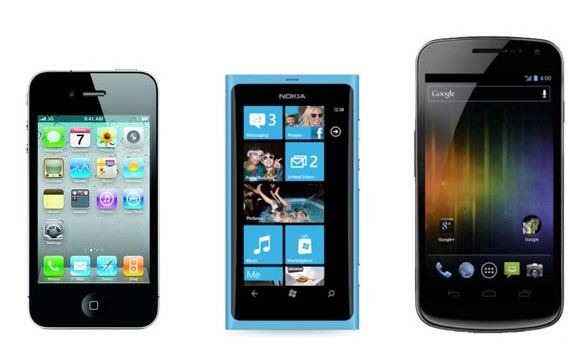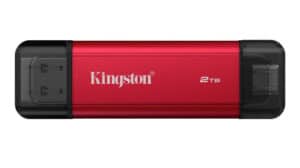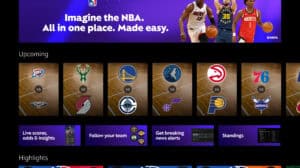If you look back to the last 3 years in the cell phone market we have seen a evolution of what the modern smartphone it all about. Hardware and software technology have caught up with each other and the marriage of the two to create a satisfying user experience is key to surviving in the market today.
As a Windows Phone user, my mouth salivates at the opportunity to get a little insight on what the guys up in Redmond are cooking up in their labs.Windows Phone is a one of a kind operating system. There’s nothing else like it on the market today and I’ll be hard pressed if you can find anything that resembles it from recent memory. As a tech enthusiast, I’ve become all to familiar with the uniqueness and innovation of a product never seeing the light of fame due to the already fierce ecosystem of products. Not to mention the dogs on top will dish out any amount of cash necessary to keep it that way. A perfect example of how great innovation can be hindered by these factors is Palm.
Palm was one of the founders of mobility in your pocket. Their isn’t one person who hasn’t heard of the Palm Pilot and for good reason, it was a device before its time. As time progresses, so does advancement in the boundaries of possibilities and thus began the birth of Apple’s IPhone. In present day, the IPhone is revered as an iconic device, “the beginning of it all”, as Apple fan boys put it. Yet, it wasn’t always perceived this way. In fact, other corporations, analysts and skeptics mocked Apple’s attempt to bring such a device into the mobile space. Heck, the only thing that made Apple relevant at the time was the IPod, and that was a device that only played music! So one could see the skepticism of Apple’s tremendous gamble. Needless to say, we’ve seen the fruits of that bet and the industry hasn’t been the same since. Apple had corporations like Motorola, LG, Samsung, and Palm frantically changing their whole game plan in order to stop the bleeding of their market share. I didn’t even bother to mention Microsoft as one of these top dogs for one reason. Even though Microsoft was a dominant player at the time, their pride and joy was Windows Mobile. For most of us, that would be all I needed to say for you to understand my unwillingness to discuss such an atrocious operating system. Microsoft didn’t innovate with Windows Mobile, they reengineered their PC software and just miniaturized it. A reverse pretense to what Apple did with the Ipad.
While Apple was conquering the world and gobbling up market share never before seen, the tech world was introduced to the birth of Android OS. An open source project acquired by Google.It to changed the industry in ways that not even Apple foresaw. Gives more credence to why Steve Jobs despised Android more then Satan himself and wouldn’t smile until he saw it burned to the ground. Google envisioned a world taken over by handheld green robots, so they based their business foundation on that principle. Not only was Android an entirely new alternative to Apple’s Iphone, it was free. Licensed free to OEM’S like Samsung, Motorola, and any others that wanted to partake in it.
Android was The Messiah for these corporations and they knew it. So thus began the mass production of android phones. Andy Rubin and the Google teams vision was nothing short of genius. I myself was very intrigued by Android. I despised Apple at the time (I still do) and wouldn’t dare dish out $600 for something so small and limited in control.Coming from a Blackjack running Windows Mobile, who wouldn’t be. On October 22nd 2008, I sat in front of a T-Mobile store and awaited my conversion to the first Android phone. The HTC G1. Android took off and never looked back. User experience wasn’t a focal point in terms of speed and fluidity in the beginning years of the smartphone. This was mostly due to the lack off processing power and early stages of innovation in these incredibly advanced devices. But yet again, Apples execution was flawless. They knew that having a tightly integrated system of hardware and software, created and controlled only by them was the key to staying on top; and it showed. Even though Android was increasing in popularity, Apple was still selling millions upon millions of Iphones. The App Store was Apples eternal trump card. It had a priceless value that couldn’t be challenged.
Getting back to this engine of continuous innovation and cutting edge technology in the industry, the mobile space was still in its infancy. There was room for more players and they needed to have a uniqueness to their product in order to compete. The 2009 CES event showcased that uniqueness. Behind the scenes, Palm was creating a product that made current mobile computing look unbearably inefficient and redundant. They called it WebOS and to this day, in my humble yet fierce opinion, has been the only mobile device remotely close to rekindling the wow factor the first generation Iphone did. Even with Jon Rubenstein’s lackluster, non exciting, public speaking tone, I still watch their press event from time to time still amazed.
I wont go through the events the occurred after Palms announcement. Even though I speak of Webos with high praises, I like most former WebOS owners can no longer dwell on the dead platforms glory days. From its financial woes to it’s horrible acquisition deals, one couldn’t help but be left with one pondering question. What if Palm had money…before they had to give away their creator in UI design, Matias Duarte…before those horrific marketing commercials that did nothing but scare the shit out of you… and before the HP acquisition -_-. What if they had the means to justify and flourish their vision, their innovation. This journey has led me to countless sleepless nights hacking my android device for no apparent reason but acquiring that rush of flashing roms, to praying for a screen bigger than 3.1inches and a resolution greater than 320×480.
Now, 3 years later we’ve come to CES 2012. Where overly spec’d devices and the cloud rule the show. If your an obsessive compulsive tech nerd like myself, you would have picked up my focus on 3 distinct forms of success in the mobile space since it’s creation. Tight integration of software and hardware, muchos dineros in the bank, and a uniqueness to your product that enhances the user experience in ways that cant be replicated (without obvious thievery..cough..cough Blackberry Playbooks Card system).
IOS is now in its 5th generation of maturity. Yes, Apple is still selling iPhones like they were a necessity to exist, but dont let the numbers fool you. Apple knows how to suck a consumer dry with standard features and slight advancement in their products from year to year. They’ve gotten comfortable in this system for various reasons. Consumer fall for it, and two it works. But this article is about the best in class operating system. IOS doesn’t quite cut it anymore. Going back to my 3 necessities of success, Apple has the money, the tightest integration on the planet in their software and hardware, but in terms of their uniqueness, app icons spread across multiple sliding panels isn’t unique, its basic. Its comfortable and simplistic, but not intuitive.
Apple gets a score of 2 out of 3.
Android is now on its 4th iteration of software called Ice Cream Sandwich and I must say, its definitely a refresh for the futuristic platform. Android was heading down the same path IOS was with a very complex operating system that became less and less pleasing to the eyes overtime. That was until Google made a decision only matched in importance by purchasing Android, by bringing Matias Duarte from Palm, to the UI team. Matias was basically the father of WebOS and the skill set he brought to the
Android platform was priceless. It took a while, but after a couple months, their acquisition started to produce some drastic changes. Android has hundreds maybe even thousands of devices from various OEMs out in the market today. Big, small, cheap, expensive; their variations are unmatched, but with that comes fragmentation. The fragmentation I’m leading towards is consistency in performance and reliability.Some of the new android devices need a dual core processor just to run OKAY, which is unacceptable, no matter how you put it. Android has become a science project for anyone to tamper with, so with that comes drawbacks and consequences. Android is mediocre at best when it come to tight integration of hardware and software. As for financial backing, it’s reliant on the manufacture that’s producing it so in the grand schemes of things, it gets half a point for effort. Android’s uniqueness resides in its ability to be highly customized and in that area, no one comes close. Its developer community is an advocate for that.
In the end, Android receives a 1.5 out of 3
Many of you may be scratching your head as to whom the MVP of the league is. The player with all the tools and concepts necessary to execute the closest thing to perfection. Windows Phone was released to the masses in 2010 and ever since has gotten mixed reviews. Surprisingly the majority has been positive, but it hasn’t translated to dollars signs for Microsoft. Built from the ground up, Windows Phone can be best defined by its elegance and fluidity. Their our no hiccups, random reboots, or unnecessary steps to get the job done. It just works and it works well. Microsoft decided to take an approach similar to Android by licensing it software to OEMS, but their was a catch. Microsoft made the genius move to have hardware requirements for all devices running their software. Guidelines to make sure user experience was never comprised. Microsoft conquered two birds with one stone here. Not only do you have tight integration with hardware and software, you also have variation. It’s a step above open source. An improved version of it so to speak. As time passed from Windows Phone initial release, it seemed as if it was going to become another WebOS sob story. Great product, not enough awareness. But then I thought, this is Microsoft. They have unlimited resources at their disposal to put into this platform and the way Steve Ballmer spoke of his latest creation, they were all in.
Then came Nokia. Nokia, known for its European dominance and market share of the world was struggling. Its hard to believe the number one phone manufacturer in the world’s outlook over the next few years were making rumors of collapse seem inevitable. Nokia had become complacent in its software department. Symbian was an aging OS and Nokia failed to care. You really can’t blame them. In all actuality, Symbian devices were still selling tremendously well in the European regions of the world. Nokia had become a trusted brand with devoted consumers. That didn’t stop Apple and Android from slowly but surely gaining more and more market share from the likes of the Finnish Corporation.
Before Nokia could respond, they were no longer considered a serious contender in the smartphone market and were projected to keep loosing dramatic market share. To be the number one manufacturer of mobile devices in the world and be considered a non-contender hit Nokia hard. But their stocks were hit even harder. Many poor attempts at making quality smart phones in the Nokia N97 and Nokia N900 were met with more disappointment. Nokia’s solution was pretty obvious to the tech world. Nokia makes the best hardware in the industry. Even better than the likes of Apple. Their design team is composed of talent from around the world that are best in their fields. Where Nokia needed guidance was it’s software. As I
said before, you can have great software and average hardware or amazing hardware and average software. In the end, it won’t be successful. It’s a successful combination of both the will unlock any devices full potential. Their were whispers of Nokia adopting Android OS and it even intrigued me to an extent knowing how amazing the Nokia N97 elegant form was and how it was coupled by horrendous software and specs rendering it Nokia’s worst flagship device to date. Yet I knew Nokia had to much pride to make a drastic decision of that magnitude. Nokia was a self efficient company, similar to Apple, they constructed everything themselves. And besides, even though Android was easily accessible and would greatly compliment Nokia’s hardware, the ecosystem for Android devices were pretty much set in stone. Samsung, HTC, and surprisingly Motorola owned the Android consumer base. All this lead to a partnership that most critics thought would never see the light of day.
Microsoft and Nokia teamed up to make their relevance in the industry known once again. Nokia announced they were adopting Windows Phone OS as their platform for all future smartphone devices. This wasn’t just another OEM partnership to add to Microsoft’s collection.This was the beginning of a merger between two powerhouses that would involve months of integration and precise execution. All or nothing was the letterhead for this collaboration. Why Windows Phone? Why pick an ecosystem that didn’t have more market share than what you sell in a day worth of business. Nokia did it for the long term. It was illuminated to the potential of this young platform and where it would go if it had the rightpieces in place.
A team of unique men and women that just breathe creativity occupy the labs of these two companies. Perfect harmony between software, hardware, and resources was now obtainable for both parties. The power of Nokia names would create greater reach for the platform and destroy any remnants of distaste Windows Mobile left behind. After only 6 months, the product of this collaboration bore its first fruit. The Nokia Lumia 710 and Nokia Lumia 800. The 710 was meant for newcomer’s to the smartphone phone world that wanted something reasonably powerful but cheap. Nokia found the perfect niche with this device. Now we come undoubtedly to one of the most beautifully crafted devices in recent memory. The Nokia Lumia 800 was a redesigned N9 with all new internal guts. Optimized for the perfect Windows Phone experience. If you don’t believe my methodology of the 3 necessities needed in order to have an iconic device, look no further than the accolades it received soon after its release. Both devices were announced mid to later 3rd quarter, so one would think with only a few months left in the year, they couldn’t make much of an impact. The Nokia Lumia 800 received Mobile Device of the Year. Windows Phone OS added to the fray with Mobile Software of the Year. These are key elements necessary to build an ecosystem of quality and best in class.
There was one more frontier this collaboration needed to conquer in order to catch the attention of the top dogs in the industry. CES 2012 became the stage for the first real presence Nokia has ever had in North America. Nokia’s design team built a device specifically tailored for the North American market and they didn’t disappoint. The Nokia Lumia 900 was the S class of the Lumia devices. With its 4.3 inch display, Clear Black Technology, AMOLED 800×480 resolution screen, 4g LTE enabled, incased in that oh so sexy uni-body polycarbonate shell, it turned heads. Though this time, it wasn’t the kind of head turning you’d expect from initial recognition. The tech world already knew Windows Phone was an excellent alternative to their devices. This head turning brought undeniable truth to the platform. Comparison were not only warranted, but necessary with the entry of the Nokia Lumia 900. It expressed every form in which Windows Phone OS wanted to acknowledged for. Relatively narrow set of hardware so its optimization was perfected. This drives performance, consistency, and prolonged battery life. It exuberated Windows Phone concept of deep human connection through social networking. Exposed the platforms uniquely visually designed aesthetics. The confidence of quality and structure of services deeply integrated into the experience.
When combining Windows Phone 7.5 uniqueness its user interface, massive reach and resources backed by Microsoft and Nokia, and the perfect combination of hardware, software, and services baked into the operating system itself. Windows Phone 7.5 comes out with the score of
3 out of 3







